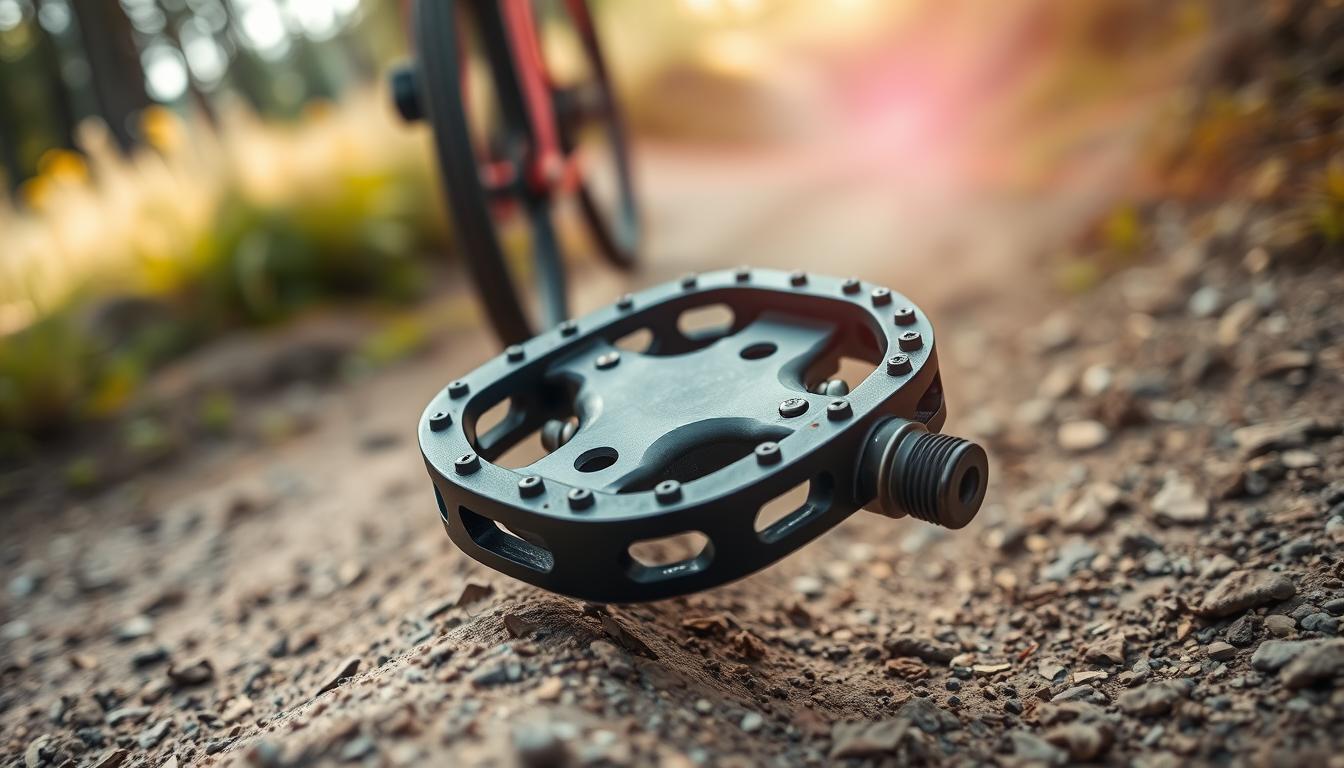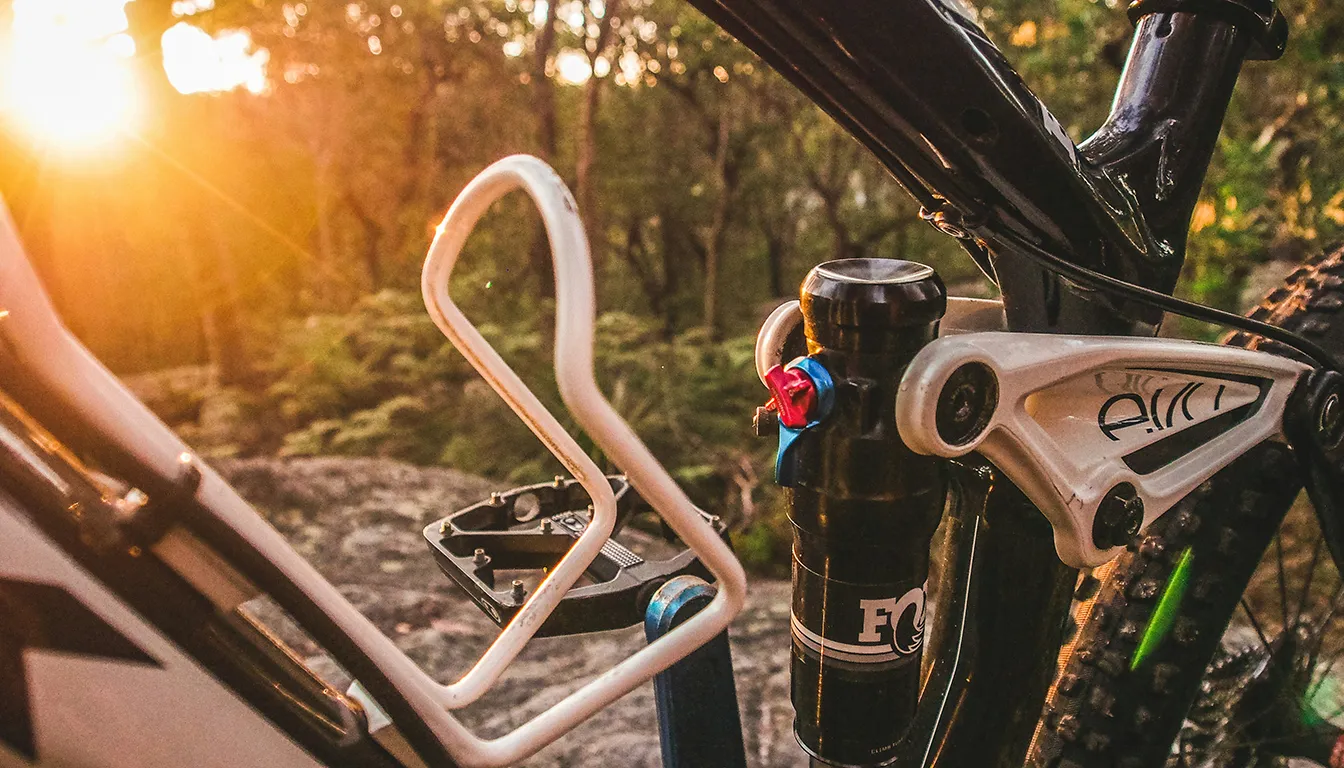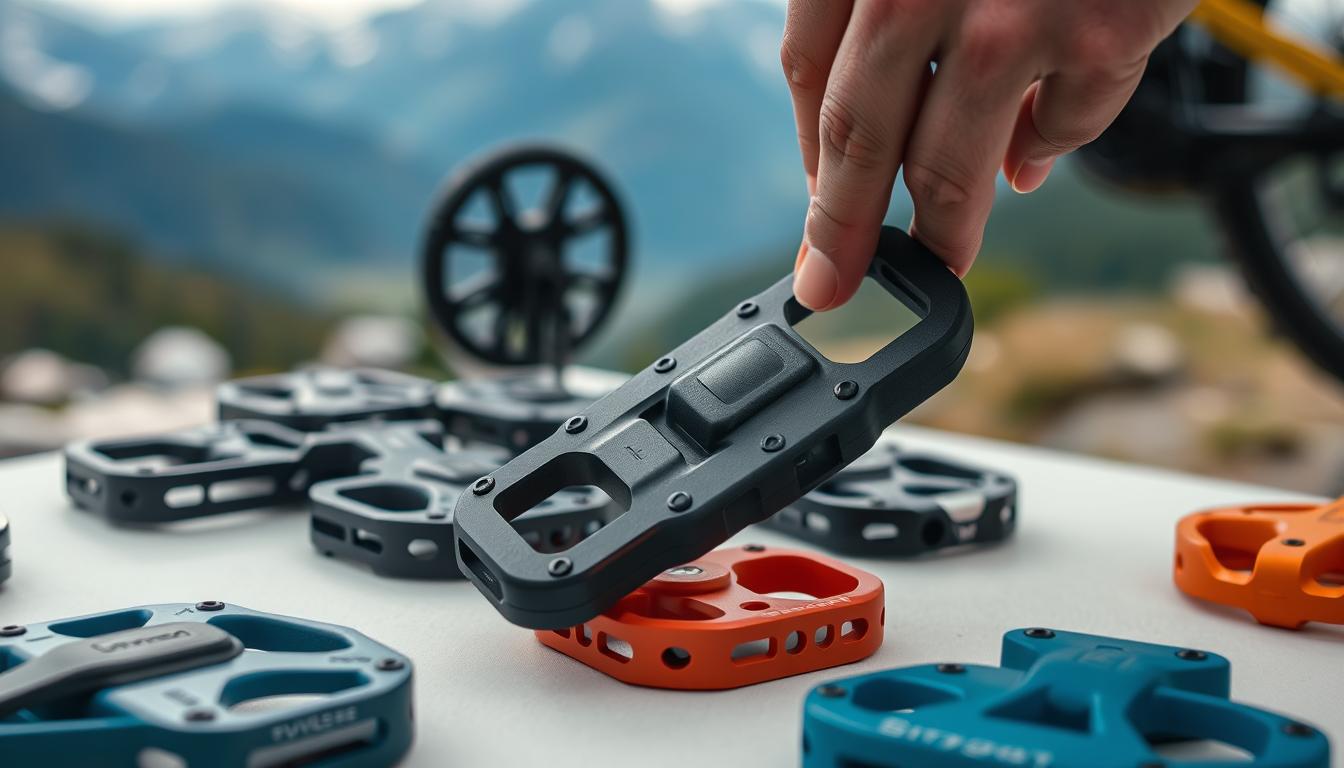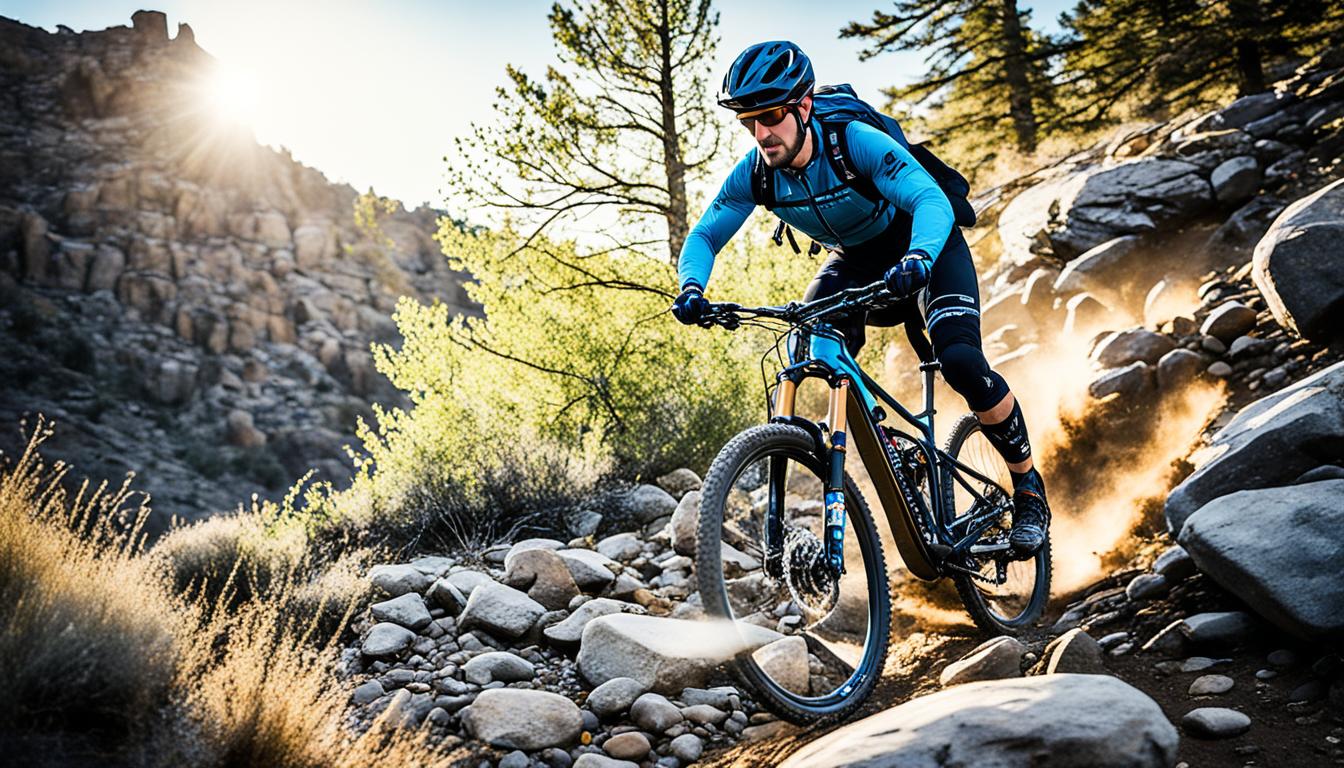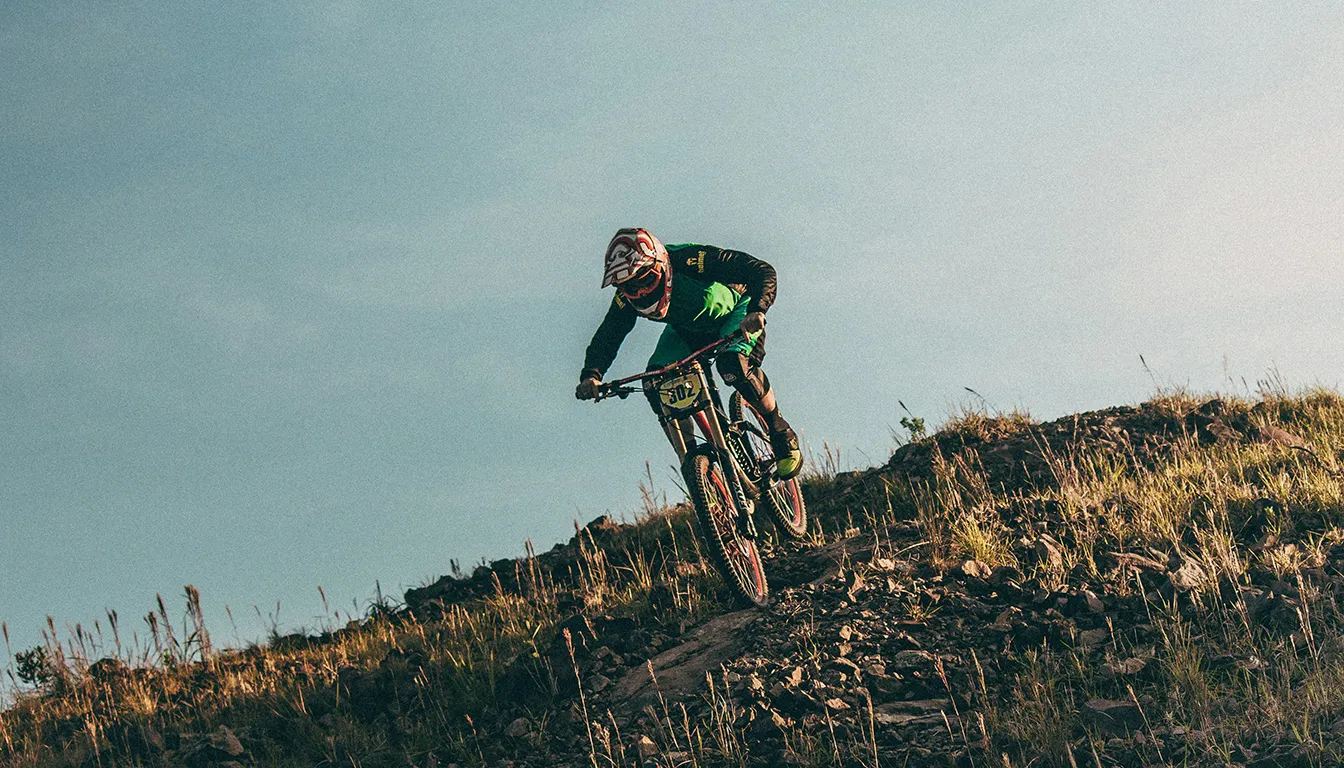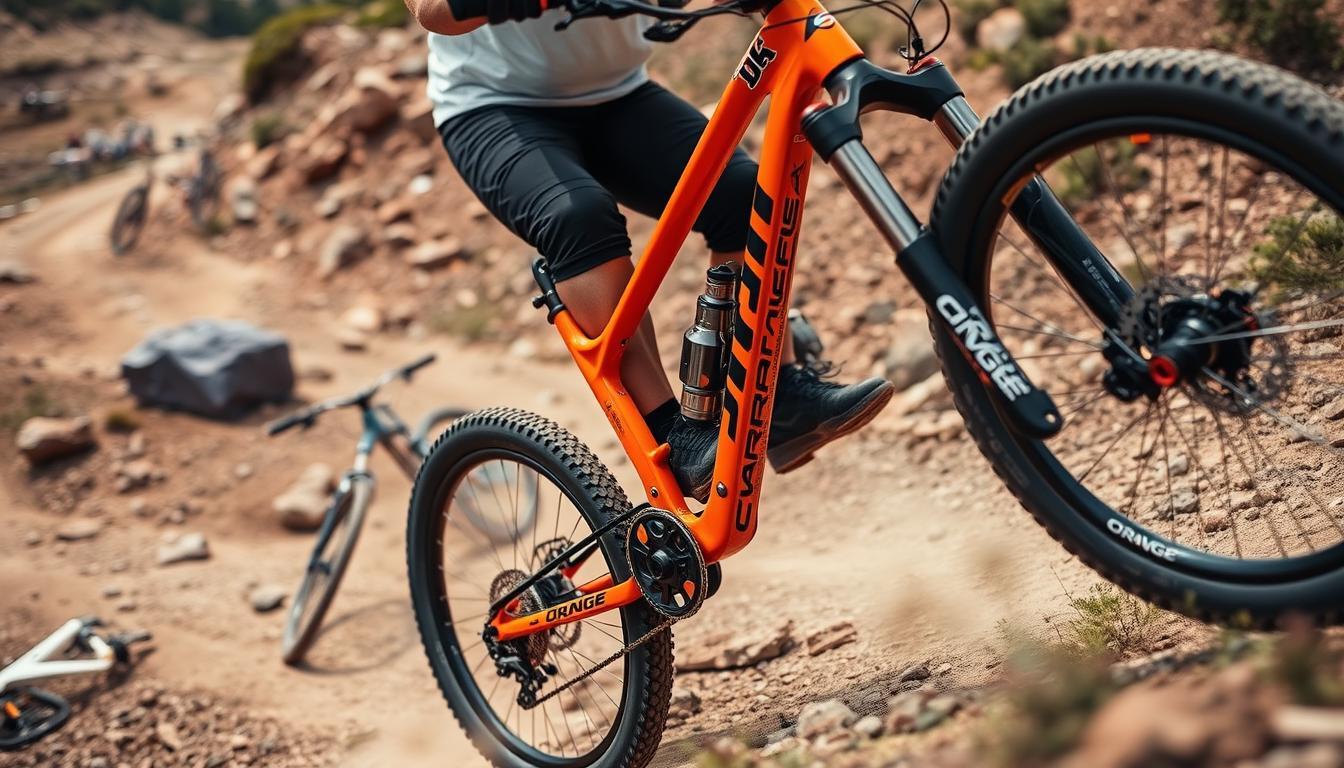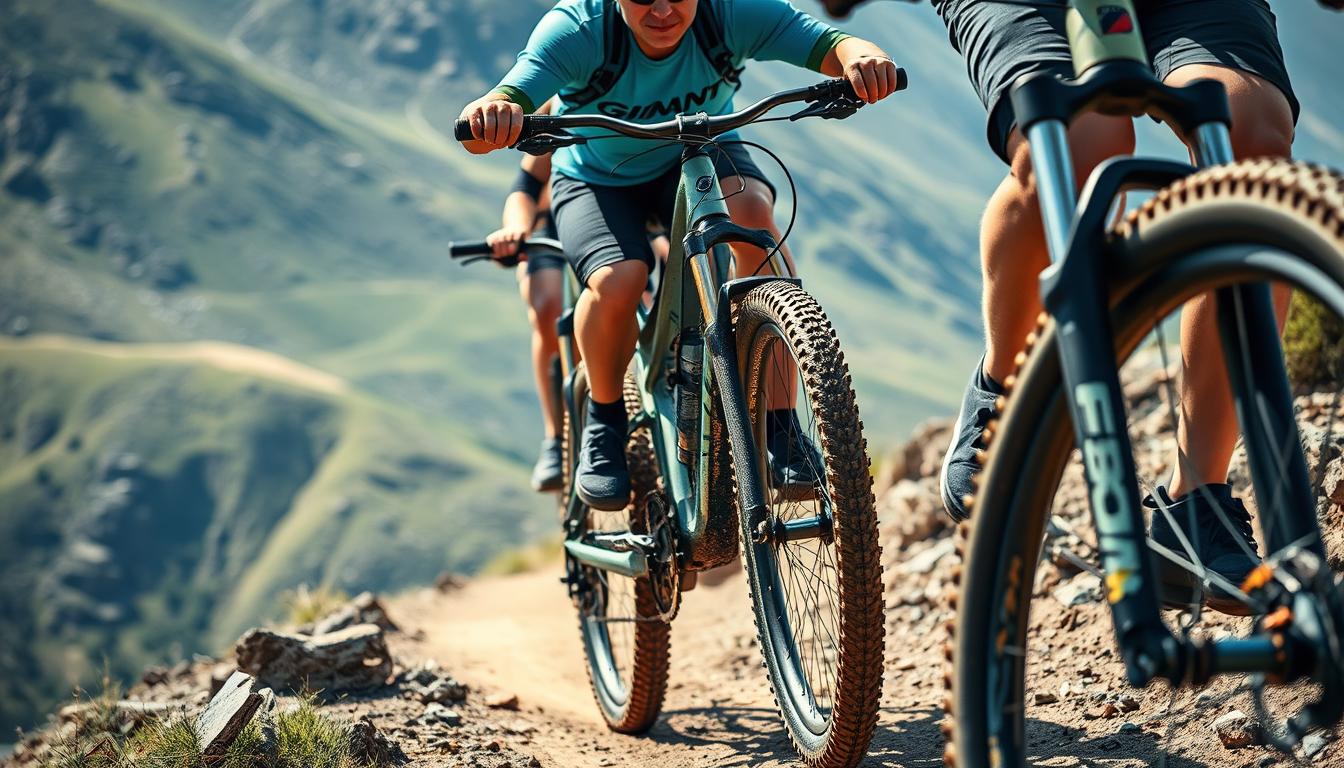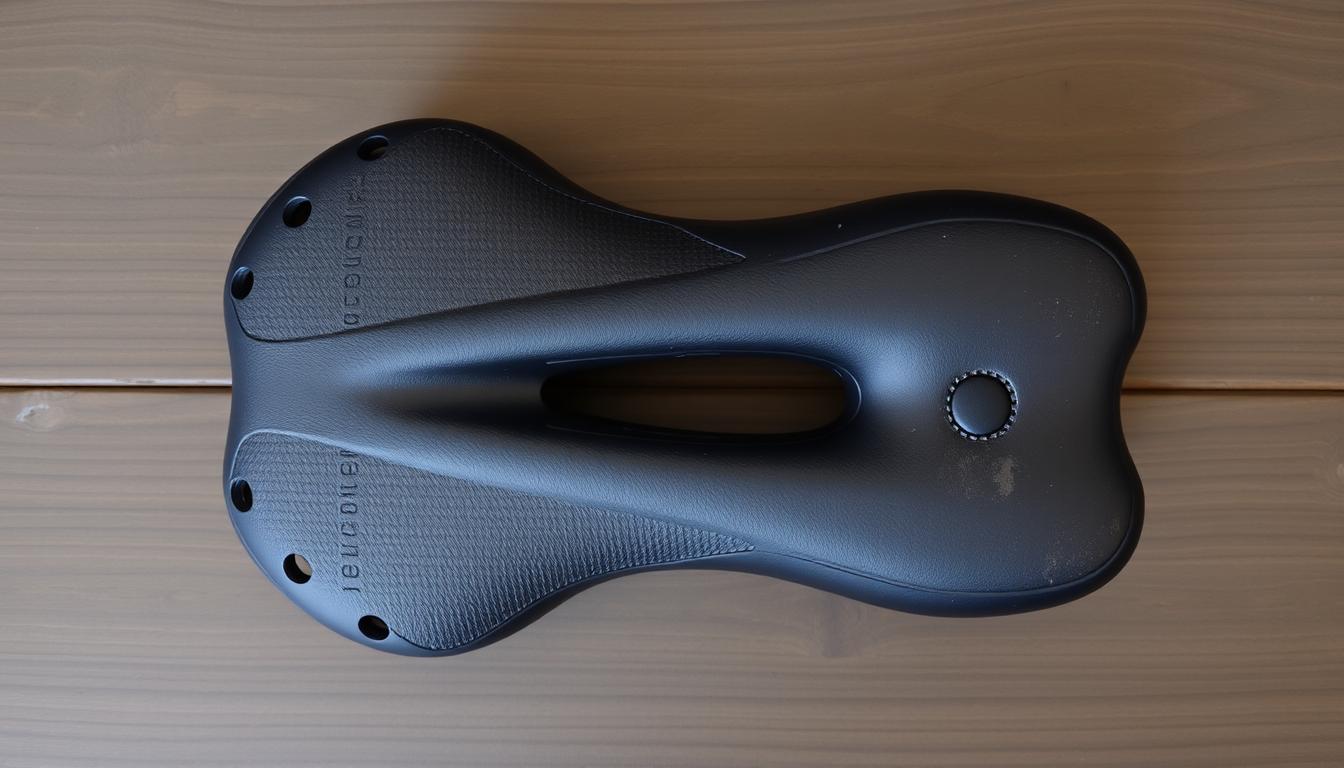Choosing the right pedals for a mountain bike is key for better riding and enjoyment. There are many types like flat, clipless, and hybrid pedals. Each has its own benefits and drawbacks. This guide will help you understand these options. It will assist you in finding the best pedals for your style, terrain, and preferences.
Flat pedals are popular for their flexibility and easy use. They make it simple to place your foot and take it off. On the other hand, clipless pedals boost power transfer and efficiency. This is great for going uphill. Depending on what you face on trails and your experience, your pedal preference might change.
For more details, check out this useful guide on choosing mountain bike pedals.
Understanding the Types of Mountain Bike Pedals
Choosing the right pedals changes your mountain biking experience. You’ll find flat pedals, clipless pedals, and hybrid pedals. Each has its benefits and drawbacks, suited to various riding styles and preferences.
Flat Pedals: Pros and Cons
Flat pedals stand out for their ease of use and flexibility. They let you quickly take your foot off, a plus for new riders or those who ride hard. These pedals have a big surface and pins. This design improves grip and control.
- Pros: Easy to use, work with any shoe, often cheaper.
- Cons: Feet might slip in tough riding spots.
Clipless Pedals: Pros and Cons
Clipless pedals create a strong link with your bike. This connection boosts power and steadiness. Ideal for riders who want efficiency on rough trails. Brands like Shimano Pedaling Dynamics (SPD) and Crank Brothers are great across different grounds.
- Pros: Great grip, more efficient, better control.
- Cons: Need special shoes, may be hard for newbies.
Hybrid Pedals: A Versatile Option
Hybrid pedals mix flat and clipless pedal traits. With these, riders can clip in for more stability. Or, they can just wear regular shoes for easy rides. For those who value flexibility, hybrids are a top choice.
Flat vs Clipless Pedals for Mountain Biking
Choosing between flat and clipless pedals affects your ride. Each pedal type has benefits suiting various riders and skills. Knowing which to pick can boost your trail experience.
When to Choose Flat Pedals
Flat pedals suit beginners or riders on tricky paths. They make getting off the bike easy, building confidence. They allow for quick foot adjustments, leading to better balance and grip. Also, they’re easy to maintain, with fewer parts to worry about.
- Easier dismounting increases rider confidence.
- Better adjustments for foot positioning aid balance.
- Lower maintenance issues compared to clipless pedals.
- Providing a larger platform allows better power transfer.
When to Choose Clipless Pedals
Clipless pedals are great for those who want more efficiency, especially uphill. They secure your feet, enabling powerful pedal strokes. This can help keep your pace and lessen tiredness on long journeys. They also offer precise control on tough ground. But, learning to clip in and out can take time, and getting stuck is a possible risk.
- Increased pedaling efficiency and power generation.
- Locks in foot position for enhanced control over rough trails.
- The risk of becoming stuck can pose challenges.
How to Choose Flat Pedals
Choosing the right flat pedals for your mountain bike is key for good performance and comfort. Knowing what to look for will help you make a smart choice.
Material Considerations: Metal vs Composite
Flat pedal material is crucial. Aluminium pedals are tough and great for rough ground. Composite pedals are lighter and cheaper, good for new or casual riders.
Determining the Right Size
Pedal size affects stability and comfort. Bigger pedals improve grip but should not be wider than your shoe. This keeps balance and control in check.
Assessing Pedal Shape: Concavity vs Convexity
Pedal shape impacts grip and comfort. Concave shapes offer better stability for the ball of your foot. Convex shapes fit riders who place their arch over the axle. Your choice should match your riding style and preference.
Maximising Grip with Pins
To enhance grip, look at pin configuration. The placement and height of pins change traction. Choose pedals with adjustable pins to customise grip for different terrains, keeping your feet in place.
How to Choose Clipless Pedals
Choosing clipless pedals is about understanding key factors for a great cycling experience. Serious cyclists value these pedals for higher efficiency and better safety. Knowing how clipless pedals work is crucial for an informed choice.
Understanding Clipless Pedal Mechanisms
Clipless systems usually have a two-bolt cleat design. This setup allows for quick clipping in and out, improving safety on rides. Double-sided pedals are handy, letting riders clip in from both sides easily.
Importance of Float in Clipless Pedals
Knowing about pedal float is vital for comfort and natural movement. Float lets your foot move sideways a bit when clipped in. For example, Look X-Track Carbon XC Pedals offer 6º of float, easing knee strain on long rides. Each pedal brand has different float levels, so the right choice can boost performance.
Choosing Compatible Cycling Shoes
Choosing the right cycling shoes is essential when using clipless pedals. Road shoes have stiff soles for better power transfer. Meanwhile, off-road shoes have recessed cleats and rough tread for traction and comfort when walking. Casual shoes are more flexible for comfort and walking ease. A snug fit helps avoid slipping and improves pedalling power for a smoother ride.
Hybrid Pedals: The Best of Both Worlds
Hybrid pedals merge the top features of flat and clipless types, appealing to various riders. With an innovative hybrid pedal design, you can use casual or clip-in shoes. This makes them great for riders who want to improve their skills. They have a flat side and a clip-in side.
How Hybrid Pedals Work
To get the most from hybrid pedals, it’s vital to know how they work. They offer a strong connection when clipped in and freedom with regular shoes. Some include a rotating platform that tilts slightly. This allows your feet to move more naturally, enhancing control and comfort.
Benefits and Drawbacks of Hybrid Pedals
Hybrid pedals have pros and cons. The benefits include:
- They work with many shoe types.
- They ease the move from flat to clipless pedals.
- They offer different ways to enhance grip, like serrated edges and pins.
However, they might not be as efficient or grippy as special-purpose pedals. This is crucial for riders seeking peak performance. Considering these points is essential when picking pedals for mountain biking.
Check out this guide for tips on choosing bike features, including pedals.
Finding the Perfect Fit: Pedals for a Mountain Bike
Choosing the right pedals for your mountain bike is crucial. You need to think about whether the pedal size matches your shoe size. The perfect fit lets you ride comfortably and control the bike well on all types of terrains. An ideal pedal supports your foot well without being too big.
Matching Pedal Size to Shoe Size
It’s important to find pedals that fit well with your shoe size. A good fit means you can pedal more effectively, which really helps on tough climbs or difficult descents. Clipless pedals are great for keeping your foot secure, so you don’t slip in wet conditions. Take a look at Funn’s pedals. They offer various designs to suit any foot size.
Considering Terrain and Riding Style
Your choice of pedals should consider the kind of trails you ride on. For challenging trails, clipless pedals might be the best for their security and performance boost. If you like more laid-back rides or often change terrains, flat pedals could be better. They make it easier to adjust your foot placement. Hybrid pedals can be a good middle ground, letting you choose between clipped-in efficiency and the flexibility of flat shoes. Think about your riding habits and the terrain to make the best choice.
Conclusion
Choosing the right mountain bike pedals is crucial for a better ride. Each type—flat, clipless, and hybrid—has its benefits for different riders. Flat pedals are great for grip and affordability. Clipless pedals, however, securely attach you to your bike, making them a favorite among racers for their efficiency.
It’s important to know about materials, shapes, and what suits your riding style when picking pedals. Whether you prefer durable aluminium pedals or budget-friendly composites, considering these aspects will improve your trail performance and comfort.
Picking flat, clipless, or hybrid pedals affects your cycling experience. Finding the right fit and style is key to enjoying your ride. Try out various types, and you’ll soon discover the best pedals to enhance your mountain biking.
FAQ
What are the different types of pedals for a mountain bike?
Mountain bikes can have flat, clipless, or hybrid pedals. Each kind has its benefits and suits various riding styles.
Why should I consider flat pedals?
Flat pedals make it easy to remove your foot quickly. This is great for beginners or those who like easy foot placement. They work with any shoe but might slip during intense rides.
What are the benefits of using clipless pedals?
Clipless pedals help transfer your power better and keep you stable. They’re perfect for experienced cyclists. They give a secure feeling and help with control on climbs and rough paths.
Can I use hybrid pedals on my mountain bike?
Yes, you can use hybrid pedals for both clip-in shoes and regular shoes. They’re versatile but might not be as efficient as pedals made for one purpose.
How do I choose the right size pedal for my mountain bike?
Pick pedals that match your shoe size for comfort and control. The pedal should support your foot well without sticking out too much.
What materials are best for flat pedals?
Flat pedals are made from aluminium or composite materials. Aluminium is strong and good for tough terrain. Composite materials are cheaper and fine for easy rides.
What does ‘float’ mean in clipless pedals?
‘Float’ lets your foot move a bit when it’s clipped in. This helps you pedal in a natural way, reducing the chance of getting hurt.
How do I maximise grip on my flat pedals?
For better grip, use flat pedals with plenty of pins. The pins hold your foot in place, stopping it from slipping. This makes your ride smoother and safer.
Are hybrid pedals suitable for performance-oriented riding?
Hybrid pedals are versatile but might not offer the same grip or power as clipless or flat pedals. They may not suit those focused on performance.
What riding conditions are best suited for clipless pedals?
Clipless pedals are ideal for riders who face climbs and tough trails. They boost power transfer and keep you stable in difficult conditions.
